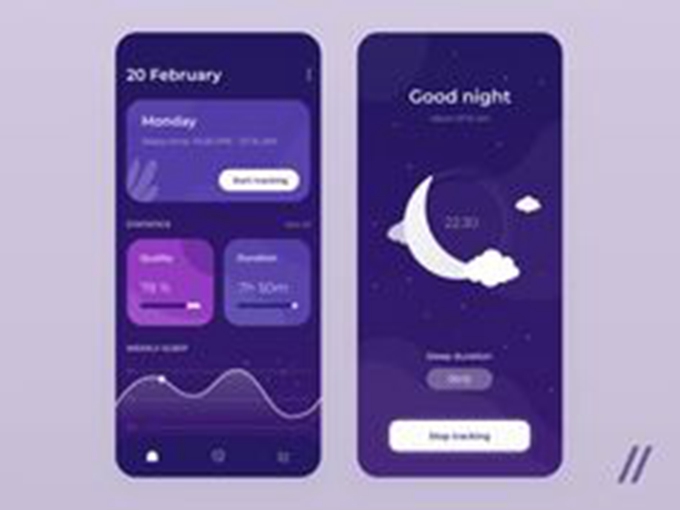Tune lately partnered with Apple to entry and analyze information on new and returning app customers, and the findings spotlight a novel alternative for ASO on iOS. The report analyzed 3.1 billion international app installs. Whereas we’ve already identified that app customers are fast to uninstall apps, Tune’s findings present {that a} surprisingly excessive variety of app customers are reinstalling apps. The truth is, they discovered that just about half— 42% to be precise—of all installs are reinstalls. Additionally they discovered that 98% of smartphone homeowners have reinstalled an app and that as a lot as 40% accomplish that frequently (weekly or month-to-month).
Table of Content
- App Store Optimization
- buy app downloads and reviews
- ios keyword install services
- android reviews buy
These findings level to the rising significance of the “What’s New” part of your App Retailer Product Web page—an undervalued advertising and marketing asset in ASO.
What’s New Concerning the “What’s New” Part?
The “What’s New” part of an App Retailer Product Web page isn’t a brand new part by any means, and the underlying objective of this subject has at all times been to speak updates or adjustments made to an app. What modified with the launch of iOS 11, nevertheless, is the situation of this part on the Product Web page—and in flip, its affect in remarketing.
Previous to iOS 11, the What’s New part was positioned beneath the app Description. In the present day, its location is contingent on whether or not a customer has already put in your app. In the event that they haven’t put in your app, it seems beneath the Rankings & Evaluations. If prospects have already put in your app, no matter whether or not they have uninstalled your app, the What’s New part seems on the prime of your Product Web page—occupying prime actual property within the First Impression Body.
Again when iOS 11 was launched, we argued that the brand new location of the What’s New part created a novel alternative to refine messaging to not solely persuade current prospects to reinstall the newest model of your app, but additionally to persuade unhappy, former prospects to redownload your app. Tune’s findings proves the idea of our argument that simply because a consumer has uninstalled your app, doesn’t imply they’re misplaced endlessly. The truth is, Tune discovered {that a} majority of reinstalls occur as a result of customers merely “determine to present the app one other attempt.”
The What’s New part is the right Product Web page asset to check and optimize within the efforts to get up this “sleeping large,” as Tune appropriately refers to it. The truth is, in our assessments we discovered that optimizing What’s New content material has the potential to raise CVR by as much as 12%!
…we discovered that optimizing What’s New content material has the potential to raise CVR by as much as 12%!
So, let’s speak technique…
Widespread “What’s New” Content material Methods
We analyzed the Product Pages of main cellular apps on the Apple App Retailer. We particularly centered our evaluation on What’s New engagement and content material. We discovered that 0-0.27% (with a median of 0.06%) of App Retailer Product Web page Guests click on to broaden the What’s New part. Nevertheless, of these guests who do click on to broaden, 16-42% (with a median of 25%) obtain the app. Because of this whereas it’s exceptionally vital to focus your consideration on copy that’s seen with out clicking to broaden, optimizing expandable content material is also useful.
In our evaluation of What’s New content material, we had been in a position to establish 4 frequent methods prime app publishers are inclined to take.
1. Obscure Updates
One of the crucial frequent approaches we’ve seen in What’s New content material, is what we name imprecise updates. This usually entails templated copy that merely states that you’re repeatedly updating your app, with out specifying precisely which updates have been made.
Whereas this method present customers your dedication to optimizing your app, it doesn’t totally leverage the chance you need to talk precisely what updates have been made as a way to actually encourage current customers to obtain the newest model and/or tackle potential points pertaining to why customers might have uninstalled. Whereas it could actually definitely assist to speak ongoing app optimization efforts, taking this method alone just isn’t really useful.
However…
Should you’re gonna go imprecise, we suggest your do it like Hulu—probably the most vaguely cool What’s New content material that’s positive to convey reinstallers.
2. Particular Fixes
One other frequent method we’ve got seen in What’s New content material, is highlighting particular fixes. This most frequently consists of detailing bugs that had been mounted. The benefit of this method is that, like imprecise updates, you’re displaying customers a dedication to optimizing your app. Past that, it’s possible you’ll be highlighting a selected situation that brought on a consumer to uninstall your app, and this might be the push that will get them to present your app one other attempt.
The hazard of using this method as a way to spotlight particular bug fixes, is that you’re utilizing essential actual property in your Product Web page to handle tiny technical issues that will not imply so much to most returning guests.
However there are methods round this…
British Airways is a superb instance of detailing a selected bug repair in a extremely customized and non-technical method.
This method is very helpful for non-game apps, as Tune discovered that not like video games, app reinstalls are largely pushed by the necessity to “remedy an issue, or simplify a course of.” Therefore, whereas technical bugs that complicate a course of can drive a consumer to uninstall an app, calling out bug fixes that make processes extra simplistic is an efficient method to cater to app consumer psychology.
We’ve additionally seen loads of sport publishers take this method to handle non bug associated points, corresponding to including extra ranges to a sport.
We’ve discovered this method to be notably helpful for re-engaging customers who switched to a competitor sport due to an thrilling new stage/characteristic they promoted.
3. Model-Associated
One other frequent method we’ve got seen in What’s New content material, is what we name the brand-related method. This consists of teasers which might be brand-focused and incorporate related characters/app content material (e.g., “keep in mind to by no means surrender if Rancid or different troublemakers attempt to make life arduous for you!”)
The benefit of this method is that it’s an extremely distinctive and inventive manner of roping followers again in. Focusing guests consideration on components of the app they know and love, and even hinting at new and associated elements, is a good way to construct curiosity and encourage customers to reinstall.
Now we have additionally discovered this method to be a superb method to attraction to customers who merely haven’t logged in for some time and simply should be re-engaged with the model.
Blossom Blast Saga’s What’s New content material is a superb instance of mixing brand-related content material with particular fixes. This method is especially related for video games, as Tune discovered that sport reinstalls are pushed largely by want or sentiment: “somebody will get bored or fed up, or completes a sport… however, after leaving it for weeks or months, they might get the itch to play once more.” Referring to brand-related themes mixed with particular non bug associated fixes, like calling out “20 new ranges,” is a good way to faucet into sport consumer psychology.
4. Making it Private
One other distinctive method we’ve seen is what we name, making it private. This entails utilizing messaging that speaks on to the Product Web page Customer.
Asking questions directed at your App Retailer Customer, is a good way to get their consideration (e.g., “Becoming a member of us after a break?” “New to the sport?”)
Try how Battlelands Royale properly combines the private with particular fixes.
The benefit of this method is that it’s one other enjoyable, distinctive, and extremely partaking method to seize your Product Web page Guests’ consideration.
Now that you’ve got a way of what massive gamers are doing, listed here are some additional tricks to incorporate into the methods you’re considering to check…



